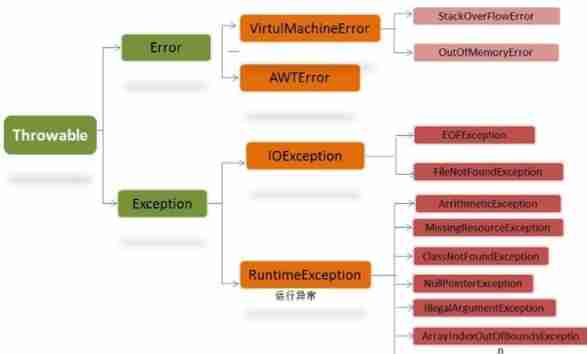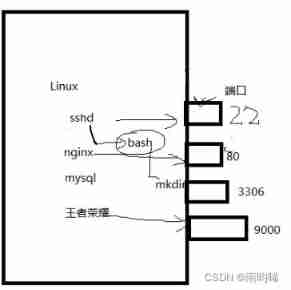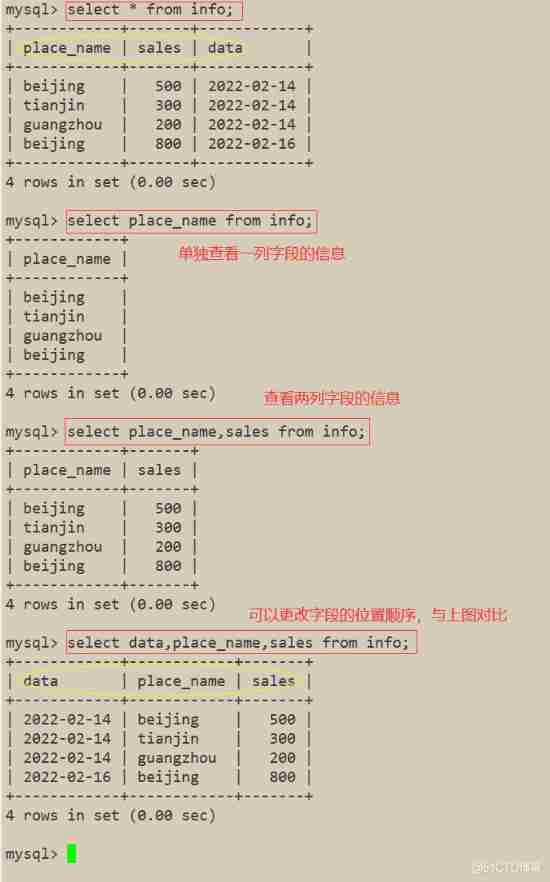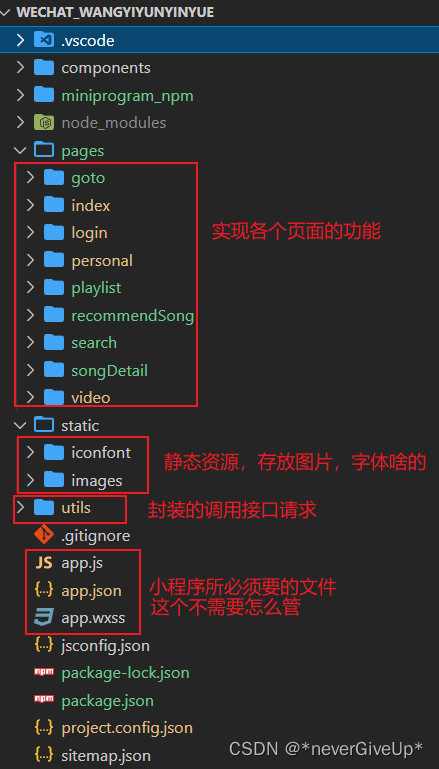当前位置:网站首页>SDNU_ ACM_ ICPC_ 2022_ Winter_ Practice_ 4th [individual]
SDNU_ ACM_ ICPC_ 2022_ Winter_ Practice_ 4th [individual]
2022-07-03 22:10:00 【eyuhaobanga】
A
A Funny Game - POJ 2484 - Virtual Judge
A game
AC Code :
#include <iostream> using namespace std; int main() { int n; while (cin >> n) { if (n == 0) { break; } if (n <= 2) { cout << "Alice" << endl; } else { cout << "Bob" << endl; } } return 0; }B
Redundant Paths The path of separation - Dark explosion 1718 - Virtual Judge
B Double connected components
AC Code :
/* Tips: 1.int? long long? 2.don't submit wrong answer 3.figure out logic first, then start writing please 4.know about the range 5.check if you have to input t or not 6.modulo of negative numbers is not a%b, it is a%b + abs(b) */ #pragma GCC optimize(2) #pragma GCC optimize(3) #pragma GCC optimize("Ofast") #include<bits/stdc++.h> using namespace std; #define lowbit(x) ((x) & -(x)) #define endl '\n' #define IOS1 ios::sync_with_stdio(false);cin.tie(nullptr);cout.tie(nullptr); #define IOS2 ios::sync_with_stdio(0);cin.tie(0);cout.tie(0); typedef vector<int> vi; typedef vector<long long> vll; typedef vector<char> vc; typedef long long ll; template<class T> T gcd(T a, T b) { return b ? gcd(b, a % b) : a; } template<class T> T lcm(T a, T b) { return a / gcd(a, b) * b; } template<class T> T power(T a, int b) { T res = 1; for (; b; b >>= 1, a = a * a) { if (b & 1) { res = res * a; } } return res; } template <typename T> inline void read(T& x) { x = 0; int f = 1; char ch = getchar(); while (!isdigit(ch)) { if (ch == '-') f = -1; ch = getchar(); } while (isdigit(ch)) { x = x * 10 + ch - '0', ch = getchar(); } x *= f; } const int INF = 0x3f3f3f3f; const int mod = 1000000007; const double PI = acos(-1.0); const double eps = 1e-6; inline int sgn(double x) { return x < -eps ? -1 : x > eps; } const int N = 100010; int head[N], low[N], fa[2 * N], p, dfn[N], in[N], s[N], top, idx, cnt, num, col[N], du[N], ans, n, m; struct node { int f, to, next; }edge[200010]; void add(int x, int y) { edge[++cnt].to = y; edge[cnt].f = x; edge[cnt].next = head[x]; head[x] = cnt; } void tarjan(int x, int f) { dfn[x] = low[x] = ++idx; s[++top] = x; in[x] = 1; for (int i = head[x]; i; i = edge[i].next) { int y = edge[i].to; if (fa[i] == f) { continue; } if (!dfn[y]) { tarjan(y, fa[i]); low[x] = min(low[x], low[y]); } else if (in[y]) { low[x] = min(dfn[y], low[x]); } } if (low[x] == dfn[x]) { num++; int a = -1; do { a = s[top--]; in[a] = 0; col[a] = num; } while(a != x); } } void solve() { cin >> n >> m; for (int i = 1; i <= m; i++) { int x, y; cin >> x >> y; add(x, y); fa[cnt] = ++p; add(y, x); fa[cnt] = p; } for (int i = 1; i <= n; i++) { if (!dfn[i]) { tarjan(i, 0); } } for (int i = 1; i <= cnt; i++) { int x = edge[i].f; int y = edge[i].to; if (col[x] == col[y]) continue; du[col[x]]++; du[col[y]]++; } for (int i = 1; i <= num; i++) { if (du[i] == 2) { ans++; } } cout << ((ans + 1) >> 1) << endl; return; } int main() { IOS1; //IOS2; int __t = 1; // cin >> __t; for (int _t = 1; _t <= __t; _t++) { solve(); } return 0; } /* */C
Girls and Boys - POJ 1466 - Virtual Judge
C Maximum independent set of bipartite graph
AC Code :
#include <iostream> #include <cstdio> #include <vector> #include <cstring> using namespace std; const int N = 100010; vector<int> a[N]; bool vis[N]; int link[N]; bool get(int x) { for (int i = 0; i < a[x].size(); i++) { int y = a[x][i]; if (!vis[y]) { vis[y] = true; if (link[y] == -1 || get(link[y])) { link[y] = x; return true; } } } return false; } void solve() { int n; while (cin >> n) { for (int i = 0; i < n; i++) { a[i].clear(); } for (int i = 0; i < n; i++) { int x, y, num; scanf("%d: (%d)", &x, &num); while (num--) { scanf("%d", &y); a[x].push_back(y); } } memset(link, -1, sizeof(link)); int cnt = 0; for (int i = 0; i < n; i++) { memset(vis, false, sizeof(vis)); if (get(i)) { cnt++; } } cout << n - cnt / 2 << endl; } return; } int main() { // ios::sync_with_stdio(0); // cin.tie(0);cout.tie(0); int t = 1; // cin >> t; for (int i = 0; i < t; i++){ solve(); } return 0; }D
Red and Blue - CodeForces 1469B - Virtual Judge
D The prefix and
AC Code :
/* Tips: 1.int? long long? 2.don't submit wrong answer 3.figure out logic first, then start writing please 4.know about the range 5.check if you have to input t or not 6.modulo of negative numbers is not a%b, it is a%b + abs(b) */ #pragma GCC optimize(2) #pragma GCC optimize(3) #pragma GCC optimize("Ofast") #include<bits/stdc++.h> using namespace std; #define lowbit(x) ((x) & -(x)) #define endl '\n' #define IOS1 ios::sync_with_stdio(false);cin.tie(nullptr);cout.tie(nullptr); #define IOS2 ios::sync_with_stdio(0);cin.tie(0);cout.tie(0); typedef vector<int> vi; typedef vector<long long> vll; typedef vector<char> vc; typedef long long ll; template<class T> T gcd(T a, T b) { return b ? gcd(b, a % b) : a; } template<class T> T lcm(T a, T b) { return a / gcd(a, b) * b; } template<class T> T power(T a, int b) { T res = 1; for (; b; b >>= 1, a = a * a) { if (b & 1) { res = res * a; } } return res; } template <typename T> inline void read(T& x) { x = 0; int f = 1; char ch = getchar(); while (!isdigit(ch)) { if (ch == '-') f = -1; ch = getchar(); } while (isdigit(ch)) { x = x * 10 + ch - '0', ch = getchar(); } x *= f; } const int INF = 0x3f3f3f3f; const int mod = 1000000007; const double PI = acos(-1.0); const double eps = 1e-6; inline int sgn(double x) { return x < -eps ? -1 : x > eps; } void solve() { int n; cin >> n; int ans1 = 0; int ans2 = 0; vector<int> r(n + 5); for (int i = 1; i <= n; i++) { cin >> r[i]; ans1 += r[i]; ans2 = max(ans1, ans2); } int m; int ans3 = 0, ans4 = 0; cin >> m; vector<int> b(m + 5); for (int i = 1; i <= m; i++) { cin >> b[i]; ans3 += b[i]; ans4 = max(ans3, ans4); } cout << ans2 + ans4 << endl; return; } int main() { IOS1; //IOS2; int __t = 1; cin >> __t; for (int _t = 1; _t <= __t; _t++) { solve(); } return 0; } /* */E
Expanding Rods - POJ 1905 - Virtual Judge
E Mathematics, computational geometry
AC Code :
#include <iostream> #include <cmath> #include <algorithm> #include <numeric> #include <iomanip> using namespace std; const double eps = 1e-6; void solve() { double x, y, z; while (cin >> x >> y >> z) { if (x < 0 || y < 0 || z < 0) { break; } double x1; x1 = (1 + y * z) * x; double l,r,mid, R; l = 0, r = x / 2; while (r - l > eps) { mid = (l + r) / 2; R = (4 * mid * mid + x * x) / (8 * mid); if (2 * R * (asin(x / (2 * R))) < x1) { l = mid; } else { r = mid; } } cout << fixed << setprecision(3) << mid << endl; } return; } int main() { solve(); return 0; }F
The XOR Largest Pair - LibreOJ 10050 - Virtual Judge
F Dictionary tree (trie Trees )
AC Code :
/* Tips: 1.int? long long? 2.don't submit wrong answer 3.figure out logic first, then start writing please 4.know about the range 5.check if you have to input t or not 6.modulo of negative numbers is not a%b, it is a%b + abs(b) */ #pragma GCC optimize(2) #pragma GCC optimize(3) #pragma GCC optimize("Ofast") #include<bits/stdc++.h> using namespace std; #define lowbit(x) ((x) & -(x)) #define endl '\n' #define IOS1 ios::sync_with_stdio(false);cin.tie(nullptr);cout.tie(nullptr); #define IOS2 ios::sync_with_stdio(0);cin.tie(0);cout.tie(0); typedef vector<int> vi; typedef vector<long long> vll; typedef vector<char> vc; typedef long long ll; template<class T> T gcd(T a, T b) { return b ? gcd(b, a % b) : a; } template<class T> T lcm(T a, T b) { return a / gcd(a, b) * b; } template<class T> T power(T a, int b) { T res = 1; for (; b; b >>= 1, a = a * a) { if (b & 1) { res = res * a; } } return res; } template <typename T> inline void read(T& x) { x = 0; int f = 1; char ch = getchar(); while (!isdigit(ch)) { if (ch == '-') f = -1; ch = getchar(); } while (isdigit(ch)) { x = x * 10 + ch - '0', ch = getchar(); } x *= f; } const int INF = 0x3f3f3f3f; const int mod = 1000000007; const double PI = acos(-1.0); const double eps = 1e-6; inline int sgn(double x) { return x < -eps ? -1 : x > eps; } vector<int> a(100010); vector<vector<int>> son(4000050, vector<int> (2)); int pos; void insert(int x) { int p = 0; for (int i = 30; ~i; i--) { int &s = son[p][x >> i & 1]; if(!s) { s = ++pos; } p = s; } } int query(int x) { int p = 0, res = 0; for (int i = 30; ~i; i--) { int s = x >> i & 1; if (son[p][!s]) { res += 1 << i; p = son[p][!s]; } else { p = son[p][s]; } } return res; } void solve() { int n, ans = 0; cin >> n; for (int i = 1; i <= n; i++) { cin >> a[i]; insert(a[i]); } for (int i = 1; i <= n; i++) { ans = max(ans, query(a[i])); } cout << ans << endl; return; } int main() { IOS1; //IOS2; int __t = 1; // cin >> __t; for (int _t = 1; _t <= __t; _t++) { solve(); } return 0; } /* */G
Teleporter - AtCoder abc167_d - Virtual Judge
G Recurrence finding law
AC Code :
#include <iostream> #include <vector> using namespace std; void solve() { long long n, k; cin >> n >> k; vector<int> a(n + 5); for (int i = 1; i <= n; i++) { cin >> a[i]; } vector<bool> vis(n + 5, false); int pass = 1, cnt = 1; vis[1] = true; while (!vis[a[pass]]) { pass = a[pass]; vis[pass] = true; cnt++; } int ans = 1; while (k && ans != a[pass]) { ans = a[ans]; k--; cnt--; } k %= cnt; for (int j = 1; j <= k; j++) { ans = a[ans]; } cout << ans << endl; return; } int main() { solve(); return 0; }H
Bracket Sequencing - AtCoder abc167_f - Virtual Judge
H Greedy thinking
AC Code :
/* Tips: 1.int? long long? 2.don't submit wrong answer 3.figure out logic first, then start writing please 4.know about the range 5.check if you have to input t or not 6.modulo of negative numbers is not a%b, it is a%b + abs(b) */ #pragma GCC optimize(2) #pragma GCC optimize(3) #pragma GCC optimize("Ofast") #include<bits/stdc++.h> using namespace std; #define lowbit(x) ((x) & -(x)) #define endl '\n' #define IOS1 ios::sync_with_stdio(false);cin.tie(nullptr);cout.tie(nullptr); #define IOS2 ios::sync_with_stdio(0);cin.tie(0);cout.tie(0); typedef vector<int> vi; typedef vector<long long> vll; typedef vector<char> vc; typedef long long ll; template<class T> T gcd(T a, T b) { return b ? gcd(b, a % b) : a; } template<class T> T lcm(T a, T b) { return a / gcd(a, b) * b; } template<class T> T power(T a, int b) { T res = 1; for (; b; b >>= 1, a = a * a) { if (b & 1) { res = res * a; } } return res; } template <typename T> inline void read(T& x) { x = 0; int f = 1; char ch = getchar(); while (!isdigit(ch)) { if (ch == '-') f = -1; ch = getchar(); } while (isdigit(ch)) { x = x * 10 + ch - '0', ch = getchar(); } x *= f; } const int INF = 0x3f3f3f3f; const int mod = 1000000007; const double PI = acos(-1.0); const double eps = 1e-6; inline int sgn(double x) { return x < -eps ? -1 : x > eps; } void solve() { int n; cin >> n; string s; int sum = 0; vector<pair<int, int>> v; for (int i = 0; i < n; i++) { cin >> s; int cnt = 0, mn = 0; int len = s.size(); for (int j = 0; j < len; j++) { if (s[j] == '(') { cnt++; } else { cnt--; } mn = min(mn, cnt); } v.emplace_back(cnt, mn); sum += cnt; } if (sum != 0) { cout << "No" << endl; return; } auto cmp = [&](pair<int, int> x,pair<int, int> y) { return min(x.second, x.first + y.second) > min(y.second, y.first + x.second); }; sort(v.begin(), v.end(), cmp); int res = 0; for (pair<int, int> it : v) { if (res < -it.second) { cout << "No" << endl; return; } res += it.first; } cout << "Yes" << endl; return; } int main() { IOS1; //IOS2; int __t = 1; // cin >> __t; for (int _t = 1; _t <= __t; _t++) { solve(); } return 0; } /* */I
Regular Bracket Sequence - CodeForces 1469A - Virtual Judge
I Parentheses matching
AC Code :
/* Tips: 1.int? long long? 2.don't submit wrong answer 3.figure out logic first, then start writing please 4.know about the range 5.check if you have to input t or not 6.modulo of negative numbers is not a%b, it is a%b + abs(b) */ #pragma GCC optimize(2) #pragma GCC optimize(3) #pragma GCC optimize("Ofast") #include<bits/stdc++.h> using namespace std; #define lowbit(x) ((x) & -(x)) #define endl '\n' #define IOS1 ios::sync_with_stdio(false);cin.tie(nullptr);cout.tie(nullptr); #define IOS2 ios::sync_with_stdio(0);cin.tie(0);cout.tie(0); typedef vector<int> vi; typedef vector<long long> vll; typedef vector<char> vc; typedef long long ll; template<class T> T gcd(T a, T b) { return b ? gcd(b, a % b) : a; } template<class T> T lcm(T a, T b) { return a / gcd(a, b) * b; } template<class T> T power(T a, int b) { T res = 1; for (; b; b >>= 1, a = a * a) { if (b & 1) { res = res * a; } } return res; } template <typename T> inline void read(T& x) { x = 0; int f = 1; char ch = getchar(); while (!isdigit(ch)) { if (ch == '-') f = -1; ch = getchar(); } while (isdigit(ch)) { x = x * 10 + ch - '0', ch = getchar(); } x *= f; } const int INF = 0x3f3f3f3f; const int mod = 1000000007; const double PI = acos(-1.0); const double eps = 1e-6; inline int sgn(double x) { return x < -eps ? -1 : x > eps; } void solve() { string s; cin >> s; if (s.size() % 2 == 1 || s[0] == ')' || s[s.size() - 1] == '(') { cout << "NO" << endl; } else { cout << "YES" << endl; } return; } int main() { IOS1; //IOS2; int __t = 1; cin >> __t; for (int _t = 1; _t <= __t; _t++) { solve(); } return 0; } /* */J
Ceil Divisions - CodeForces 1469D - Virtual Judge
J recursive
AC Code :
/* Tips: 1.int? long long? 2.don't submit wrong answer 3.figure out logic first, then start writing please 4.know about the range 5.check if you have to input t or not 6.modulo of negative numbers is not a%b, it is a%b + abs(b) */ #pragma GCC optimize(2) #pragma GCC optimize(3) #pragma GCC optimize("Ofast") #include<bits/stdc++.h> using namespace std; #define lowbit(x) ((x) & -(x)) #define endl '\n' #define IOS1 ios::sync_with_stdio(false);cin.tie(nullptr);cout.tie(nullptr); #define IOS2 ios::sync_with_stdio(0);cin.tie(0);cout.tie(0); typedef vector<int> vi; typedef vector<long long> vll; typedef vector<char> vc; typedef long long ll; template<class T> T gcd(T a, T b) { return b ? gcd(b, a % b) : a; } template<class T> T lcm(T a, T b) { return a / gcd(a, b) * b; } template<class T> T power(T a, int b) { T res = 1; for (; b; b >>= 1, a = a * a) { if (b & 1) { res = res * a; } } return res; } template <typename T> inline void read(T& x) { x = 0; int f = 1; char ch = getchar(); while (!isdigit(ch)) { if (ch == '-') f = -1; ch = getchar(); } while (isdigit(ch)) { x = x * 10 + ch - '0', ch = getchar(); } x *= f; } const int INF = 0x3f3f3f3f; const int mod = 1000000007; const double PI = acos(-1.0); const double eps = 1e-6; inline int sgn(double x) { return x < -eps ? -1 : x > eps; } void solve() { int n; cin >> n; vector<int> x, y; int m = 0; if (n > 32) { for (int i = 32; i <= n - 2; i++) { x.push_back(i); y.push_back(n - 1); m++; } int L = n; while (L > 1) { x.push_back(n - 1); y.push_back(31); m++; L = (L + 31) / 32; } n = 32; } for (int i = 2; i <= n - 2; i++) { x.push_back(i); y.push_back(n - 1); m++; } for (int i = 0; i < 5; i++) { x.push_back(n - 1); y.push_back(1); m++; } cout << m << endl; for (int i = 0; i < m; i++) { cout << x[i] + 1 << " " << y[i] + 1 << endl; } return; } int main() { IOS1; //IOS2; int __t = 1; cin >> __t; for (int _t = 1; _t <= __t; _t++) { solve(); } return 0; } /* */K
Building a Fence - CodeForces 1469C - Virtual Judge
K
AC Code :
/* Tips: 1.int? long long? 2.don't submit wrong answer 3.figure out logic first, then start writing please 4.know about the range 5.check if you have to input t or not 6.modulo of negative numbers is not a%b, it is a%b + abs(b) */ #pragma GCC optimize(2) #pragma GCC optimize(3) #pragma GCC optimize("Ofast") #include<bits/stdc++.h> using namespace std; #define lowbit(x) ((x) & -(x)) #define endl '\n' #define IOS1 ios::sync_with_stdio(false);cin.tie(nullptr);cout.tie(nullptr); #define IOS2 ios::sync_with_stdio(0);cin.tie(0);cout.tie(0); typedef vector<int> vi; typedef vector<long long> vll; typedef vector<char> vc; typedef long long ll; template<class T> T gcd(T a, T b) { return b ? gcd(b, a % b) : a; } template<class T> T lcm(T a, T b) { return a / gcd(a, b) * b; } template<class T> T power(T a, int b) { T res = 1; for (; b; b >>= 1, a = a * a) { if (b & 1) { res = res * a; } } return res; } template <typename T> inline void read(T& x) { x = 0; int f = 1; char ch = getchar(); while (!isdigit(ch)) { if (ch == '-') f = -1; ch = getchar(); } while (isdigit(ch)) { x = x * 10 + ch - '0', ch = getchar(); } x *= f; } const int INF = 0x3f3f3f3f; const int mod = 1000000007; const double PI = acos(-1.0); const double eps = 1e-6; inline int sgn(double x) { return x < -eps ? -1 : x > eps; } void solve() { int n, k; cin >> n >> k; vector<int> a(n + 5); for (int i = 0; i < n; i++) { cin >> a[i]; } int maxx = a[0], minn = a[0]; bool ok = true; for (int i = 1; i < n; i++) { if (maxx <= a[i] - k) { ok = false; } else { minn = max(minn - k + 1, a[i]); maxx = min(maxx + k - 1, a[i] + k - 1); if (minn > maxx) { ok = false; } } } if (!(minn <= a[n - 1] && a[n - 1] <= maxx)) { ok = false; } cout << (ok ? "YES" : "NO") << endl; return; } int main() { IOS1; //IOS2; int __t = 1; cin >> __t; for (int _t = 1; _t <= __t; _t++) { solve(); } return 0; } /* */L
: (Colon) - AtCoder abc168_c - Virtual Judge
L
AC Code :
/* Tips: 1.int? long long? 2.don't submit wrong answer 3.figure out logic first, then start writing please 4.know about the range 5.check if you have to input t or not 6.modulo of negative numbers is not a%b, it is a%b + abs(b) */ #pragma GCC optimize(2) #pragma GCC optimize(3) #pragma GCC optimize("Ofast") #include<bits/stdc++.h> using namespace std; #define lowbit(x) ((x) & -(x)) #define endl '\n' #define IOS1 ios::sync_with_stdio(false);cin.tie(nullptr);cout.tie(nullptr); #define IOS2 ios::sync_with_stdio(0);cin.tie(0);cout.tie(0); typedef vector<int> vi; typedef vector<long long> vll; typedef vector<char> vc; typedef long long ll; template<class T> T gcd(T a, T b) { return b ? gcd(b, a % b) : a; } template<class T> T lcm(T a, T b) { return a / gcd(a, b) * b; } template<class T> T power(T a, int b) { T res = 1; for (; b; b >>= 1, a = a * a) { if (b & 1) { res = res * a; } } return res; } template <typename T> inline void read(T& x) { x = 0; int f = 1; char ch = getchar(); while (!isdigit(ch)) { if (ch == '-') f = -1; ch = getchar(); } while (isdigit(ch)) { x = x * 10 + ch - '0', ch = getchar(); } x *= f; } const int INF = 0x3f3f3f3f; const int mod = 1000000007; const double PI = acos(-1.0); const double eps = 1e-6; inline int sgn(double x) { return x < -eps ? -1 : x > eps; } void solve() { double a, b, h, m; cin >> a >> b >> h >> m; double x, y; x = 30 * h + 0.5 * m; y = 6 * m; double c = fabs(x - y); if (c > 180) { c = 360 - c; } double ans = sqrt(a * a + b * b - 2 * a * b * cos(c / 180 * 2 * asin(1))); cout << fixed << setprecision(20) << ans << endl; return; } int main() { IOS1; //IOS2; int __t = 1; // cin >> __t; for (int _t = 1; _t <= __t; _t++) { solve(); } return 0; } /* */M
Colorful Blocks - AtCoder abc167_e - Virtual Judge
M Combinatorial mathematics DP
AC Code :
/* Tips: 1.int? long long? 2.don't submit wrong answer 3.figure out logic first, then start writing please 4.know about the range 5.check if you have to input t or not 6.modulo of negative numbers is not a%b, it is a%b + abs(b) */ #pragma GCC optimize(2) #pragma GCC optimize(3) #pragma GCC optimize("Ofast") #include<bits/stdc++.h> using namespace std; #define lowbit(x) ((x) & -(x)) #define endl '\n' #define IOS1 ios::sync_with_stdio(false);cin.tie(nullptr);cout.tie(nullptr); #define IOS2 ios::sync_with_stdio(0);cin.tie(0);cout.tie(0); typedef vector<int> vi; typedef vector<long long> vll; typedef vector<char> vc; typedef long long ll; template<class T> T gcd(T a, T b) { return b ? gcd(b, a % b) : a; } template<class T> T lcm(T a, T b) { return a / gcd(a, b) * b; } template<class T> T power(T a, int b) { T res = 1; for (; b; b >>= 1, a = a * a) { if (b & 1) { res = res * a; } } return res; } template <typename T> inline void read(T& x) { x = 0; int f = 1; char ch = getchar(); while (!isdigit(ch)) { if (ch == '-') f = -1; ch = getchar(); } while (isdigit(ch)) { x = x * 10 + ch - '0', ch = getchar(); } x *= f; } const int INF = 0x3f3f3f3f; const int mod = 1000000007; const double PI = acos(-1.0); const double eps = 1e-6; inline int sgn(double x) { return x < -eps ? -1 : x > eps; } const long long mode = 998244353; long long power1(long long a, long long b) { return b ? power1(a * a % mode, b / 2) * (b % 2 ? a : 1) % mode : 1; } void solve() { long long n, m, k, ans = 0, tmp = 1; cin >> n >> m >> k; for (int i = 0; i <= k; i++) { ans = (ans + (tmp * m % mode) * power1(m - 1, n - i - 1)) % mode; tmp = tmp * (n - i - 1) % mode * power1(i + 1, mode - 2) % mode; } cout << ans << endl; return; } int main() { IOS1; //IOS2; int __t = 1; // cin >> __t; for (int _t = 1; _t <= __t; _t++) { solve(); } return 0; } /* */
边栏推荐
- Analysis report on the development prospect and investment strategy of global and Chinese modular automation systems Ⓟ 2022 ~ 2027
- JS notes (III)
- [sg function]split game (2020 Jiangxi university student programming competition)
- Let me ask you a question. Have you ever used the asynchronous io of Flink SQL to associate dimension tables in MySQL? I set various settings according to the official website
- Kali2021.4a build PWN environment
- Redis single thread and multi thread
- The post-90s resigned and started a business, saying they would kill cloud database
- (POJ - 2912) rochambau (weighted concurrent search + enumeration)
- Report on the development strategy of China's engineering bidding agency and suggestions for the 14th five year plan Ⓙ 2022 ~ 2028
- Bluebridge cup Guoxin Changtian single chip microcomputer -- hardware environment (I)
猜你喜欢

Summary of basic knowledge of exception handling

(5) User login - services and processes - History Du touch date stat CP

MySQL - idea connects to MySQL

Mysql database - Advanced SQL statement (I)

Covariance

2022 free examination questions for safety management personnel of hazardous chemical business units and reexamination examination for safety management personnel of hazardous chemical business units

Imitation Netease cloud music applet

Teach you how to install aidlux (1 installation)

Persistence of Nacos

How PHP gets all method names of objects
随机推荐
A little understanding of GSLB (global server load balance) technology
Bluebridge cup Guoxin Changtian single chip microcomputer -- hardware environment (I)
Exclusive interview with the person in charge of openkruise: to what extent has cloud native application automation developed now?
Minio deployment
Report on the development status and investment planning trends of China's data center industry Ⓡ 2022 ~ 2028
Teach you how to install aidlux (1 installation)
Redis single thread and multi thread
WFC900M-Network_ Card/Qualcomm-Atheros-AR9582-2T-2R-MIMO-802.11-N-900M-high-power-Mini-PCIe-Wi-Fi-Mod
常用sql集合
Getting started with DOM
DR-AP40X9-A-Qualcomm-IPQ-4019-IPQ-4029-5G-4G-LTE-aluminum-body-dual-band-wifi-router-2.4GHZ-5GHz-QSD
DOM light switch case
What indicators should be paid attention to in current limit monitoring?
Exclusive interview with the person in charge of openkruise: to what extent has cloud native application automation developed now?
Control loop of program (while loop)
Introduction to kubernetes
Are the top ten securities companies safe to open accounts and register? Is there any risk?
Dynamic research and future planning analysis report of China's urban water supply industry Ⓝ 2022 ~ 2028
China's coal industry investment strategic planning future production and marketing demand forecast report Ⓘ 2022 ~ 2028
Leetcode problem solving - 235 Nearest common ancestor of binary search tree